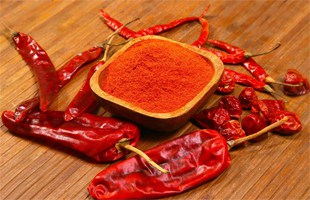Spice blends, also known as spice mixes or spice rubs, are combinations of various ground spices, herbs, and seasonings that are meticulously curated to achieve a desired flavor profile. Traced back to 5000 years ago, India, Greece, China and other ancient civilizations start to use spices. There is Spice trade since 1729BC. Through the changes of history, spices and spice blends have fallen into the kitchen and become an indispensable part of people’s lives. What is exactly spice blends, and what makes spices blends so special?

Table of Contents
What are the 6 popular spices?
Spices are derived from various parts of plants, including seeds, bark, roots, fruits, flowers, and even the buds. They are prized for their distinct flavors, aromas, and medicinal properties. Spices add depth, complexity, and a touch of magic to cuisines around the world. The world of spices is vast, encompassing a wide array of flavors, colors, and textures. Here are some popular spices that have become kitchen essentials globally:
- Cinnamon: Derived from the inner bark of specific tree species, cinnamon is known for its warm, sweet, and slightly spicy flavor. It is commonly used in both sweet and savory dishes, beverages, and baked goods.
- Cumin: With its earthy and slightly nutty flavor, cumin is a staple in cuisines such as Indian, Middle Eastern, and Mexican. Its seeds are ground and used in spice blends, curries, stews, and even as a seasoning for grilled meats.
- Turmeric: Recognized for its vibrant yellow color, turmeric has a distinct earthy and slightly bitter taste. It is commonly used in Indian and Southeast Asian cuisines and is known for its potential health benefits.
- Paprika: Derived from dried and ground red bell peppers or chili peppers, paprika offers a mild and slightly sweet flavor. It is a common ingredient in dishes ranging from stews and soups to marinades and garnishes.
- Ginger: Known for its sharp and slightly spicy flavor, ginger adds a zing to both sweet and savory dishes. It is widely used in Asian cuisines, beverages, baked goods, and as a digestive aid.
- Nutmeg: This fragrant spice comes from the seed of the nutmeg tree and has a warm, sweet, and slightly woody flavor. It is often used in baking, desserts, and creamy sauces.
What is quality spice Blends?
Ground spices are often combined in harmonious blends to create signature flavors in various cuisines, which is so called spice blends. These spice blends can range from complex mixes like garam masala in Indian cuisine to simpler combinations like Italian seasoning. One of the representatives of Chinese spice blends is the “Five spices”.
What is Chinese Five-spices?

Chinese Five-Spice, or wǔxiāng fěn in Mandarin, is derived from the balance of sour, sweet, bitter, spicy and salty flavors in Chinese culture. It is a traditional spice blends that combines five key ingredients in perfect harmony. The precise composition may vary slightly across different regions and individual preferences, but the core components typically include:
- Star Anise: With its distinct licorice-like flavor, star anise provides the dominant note in Chinese Five-Spice. Its warm and sweet undertones lend a unique aromatic character to the blend.
- Cloves: Cloves contribute a rich and pungent flavor to the spice mix, adding depth and complexity. They bring a slightly sweet and spicy element to the overall profile.
- Chinese Cinnamon: Also known as cassia bark, Chinese cinnamon provides a warm and sweet flavor reminiscent of traditional cinnamon. It adds a touch of sweetness and a subtle woody note to the blend.
- Sichuan Peppercorns: Sichuan peppercorns impart a numbing and citrusy sensation, creating a tingling mouthfeel. They balance the other spices and add a distinctive kick to the mix.
- Fennel Seeds or Chinese Licorice Root: The final element can vary between fennel seeds and Chinese licorice root. Fennel seeds contribute a gentle sweetness, while Chinese licorice root adds a delicate herbal note.
While pre-packaged Chinese Five-Spice blends are readily available, creating your own allows you to customize the ratios and flavors according to your preference. Here’s a simple homemade recipe:
Ingredients:
- 1 tablespoon whole star anise
- 1 tablespoon whole cloves
- 1 tablespoon Chinese cinnamon (cassia bark), broken into small pieces
- 1 tablespoon Sichuan peppercorns
- 1 tablespoon fennel seeds or 1 tablespoon Chinese licorice root (optional)
How spice blends are made in spice factory?
Complete spice manufacturing process flow chart : Spices washing cleaning — spices drying –spices roasting — spices powder grinding –spices powder sifting grading — spices powder mixing blending — automatic spices powder filling packing







